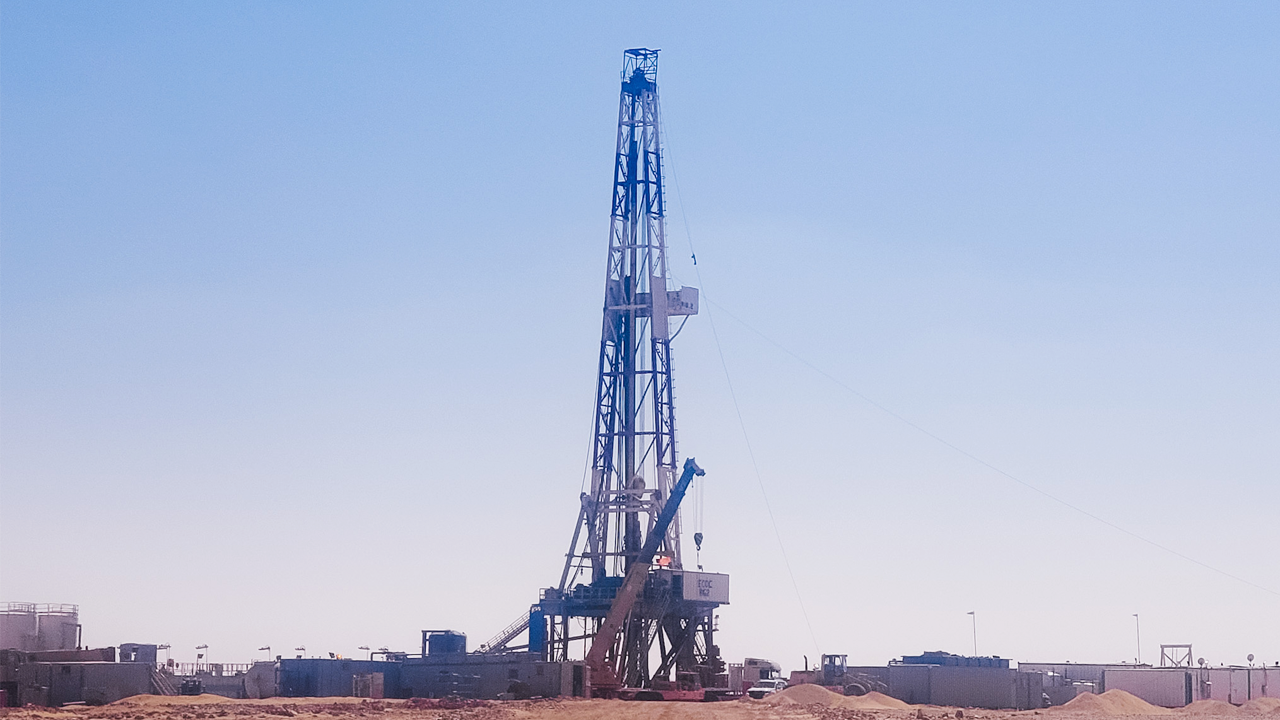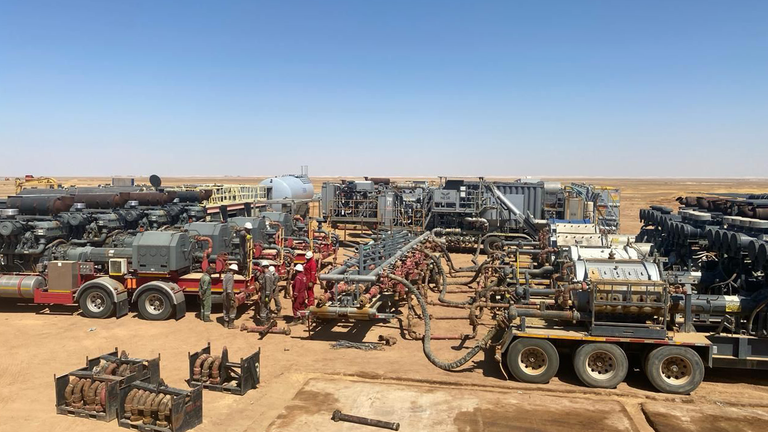
TAG Oil is using unconventional resource development techniques to unlock new oil and gas potential.
By Jason Smith
- TAG Oil is the first to apply tried and true horizontal drilling and fracking techniques to unconventional oil plays in Egypt
- Early signs are promising for flow testing of the company’s first horizontal well drilled in its Abu Roash “F” (ARF) oil play
- TAG Oil’s management team has a track record of applying new ideas and technologies to existing oil fields to unlock value — and then selling their companies for the benefit of shareholders
Horizontal drilling and fracking technology revolutionized oil and gas production in the U.S. in the 2000s and 2010s.
Oil fields thought to be uneconomic were reawakened with a combination of horizontal drilling and hydraulic fracturing. One area of Texas, called the Eagle Ford Shale play, produced 271 million barrels of oil in 2023, according to the Railroad Commission of Texas.
The discovery well in Eagle Ford was drilled in 2008. Since then, thousands of wells have been drilled in the play which spans 400 miles in length by 50 miles in width. The formation has minted a lot of overnight millionaires in the 24 years since its initial discovery.
Despite the success of using these unconventional resource development techniques to unlock new oil and gas potential in North America, they have not been used in Egypt, where TAG Oil Ltd. (TSXV: TAO | OTCQX: TAOIF) is about to test its first horizontal well in the company's Badr oil field (BED-1) concession.
With a management team that is familiar with unconventional oil and gas production, TAG Oil is at an inflection point in the company’s history. Success with the flow test of this horizontal well could help the company unlock the potential of the ARF oil play within the BED-1 oil field.
"In TAG Oil's case, once these wells are drilled, they can be tied in and producing within days or weeks." — Malcolm Shaw, Partner, Hydra Capital Partners |
Favorable comparisons to Eagle Ford
The ARF in the BED-1 oil field has a lot of similarities to the Eagle Ford in terms of its mineral composition and the environment in which it was deposited.
In terms of other comparisons, the water saturation in the ARF is lower than that of the Eagle Ford and its total organic content (TOC) is similar. While the Eagle Ford boasts slightly higher oil quality, the reservoir pressure and temperature in the ARF are both higher, which is beneficial for production. In addition, the ARF has lower shale content and, as a result, may be more brittle than the Eagle Ford — meaning that the ARF is amenable to hydraulic fracturing, just like its North American counterpart.
TAG Oil recently completed its first horizontal well (called the BED4-T100 well) in the ARF play. Due to the unexpectedly high pressure and associated oil returns to surface that were encountered in the reservoir, the company cut its drilling short in the well, drilling 308 meters of lateral length, instead of the planned 1,000 meters.
The company learned a lot about the reservoir from this initial well. Toby Pierce, CEO of TAG Oil, said: “It is heavily fractured and its porosity and permeability are better than expected.” As TAG Oil moves to begin flow testing the well later this month, Pierce says, “we should get good flow rates based on what we’ve seen over the last month of drilling, all else being equal.”
Malcolm Shaw, a former international energy analyst who is now a partner at Hydra Capital Partners, notes that the company’s decision to shorten the horizontal leg of the well was for good reason, as it “means there is a lot of energy in the reservoir trying to push the oil out of the formation and to surface. The company stopped drilling because the well really wanted to flow at them, which was 1) a safety concern, and 2) a good indicator of potential productivity. I think that the company did the right thing here and should still have a strong well with what they’ve drilled. Next time they’ll be more prepared and can push for a longer horizontal.”
Flow testing first well in April
The flow test for this well is the next big step and will involve stimulating sections of the reservoir — those which aren’t already naturally fractured by Mother Nature — with hydraulic fracturing.

Successful completion of the drilling phase for the BED4-T100 horizontal well in the ARF oil play.
The existing natural fracturing is potentially a big plus for this initial well. Shaw notes: “I’ve seen naturally fractured wells test at thousands of barrels of oil per day, so I’m optimistic for a strong flow test here. The market is looking for something in the range of 1,000-1,500 barrels of oil per day from the BED4-T100 well and we will all see what it flows soon enough. This well is a play-opener.”
In the second half of April, TAG Oil will be fracking the BED4-T100 well with up to 12 stages, a process which should take about a week. “That will further enhance the productivity and permeability of the reservoir,” says Pierce.
Generating cash flow off bigger, more complex assets
There is potential for this well to be a significant catalyst for TAG Oil’s share price. Egypt is an under-appreciated oil and gas jurisdiction, with the BED-1 oil field having produced approximately 90 million barrels of oil since its discovery by Shell in 1982. However, TAG Oil is the first company to specifically target the ARF interval in this field, which is the oil source rock for most of the greater region.
The country currently produces 559,000 bopd and is a net exporter of natural gas. It has had its economic challenges of late, but Pierce says that the recent US$55 billion IMF/EU/UAE rescue package, “has made Egypt seem less risky.”
Zeroing in on the area of the country where TAG Oil has its concession, it is surrounded by in-place oil and gas infrastructure like infield gathering lines, a production facility and an oil export line to the coast. Shaw notes, “In TAG Oil’s case, once these wells are drilled, they can be tied in and producing within days or weeks. The time and cost savings are very significant.”
That is a marked difference from other oil and gas plays in far flung locations, where the timeline from discovery to cash flow could be five to ten years, and infrastructure may be non-existent.
All of this plays into TAG Oil’s strategy of focusing on using unconventional techniques to generate cash flow and build value for shareholders by unlocking bigger, more technically complex assets rather than focusing on wildcat exploration. And the ARF prize in the BED-1 field is big, with RPS Energy (a renowned energy consulting firm) estimating there is more than US$420 million in contingent resource value (unrisked) on just a portion of TAG Oil’s existing acreage.

Preparing for the frac at the BED4-T100 horizontal well in the Badr Oil Field in the Western Desert of Egypt.
Potential for lucrative exit down the road
With deep experience in both unconventional plays and successful exits, the team at TAG Oil is primed to deliver value for shareholders. Executive Chairman and Director, Abby Badwi, has had several of his companies taken over, including Bankers Petroleum, Rally Energy and Kuwait Energy and all were multi-hundred-million-dollar exits.
According to Pierce, with a cash position of $10 million, “TAG Oil should have enough cash to drill at least one more horizontal well in 2024.” Assuming all goes well with the first well, he anticipates the second well would be drilled in the third or fourth quarter of 2024 and the company may choose expand on that plan if it seems prudent to do so.
Near-term share price catalysts for TAG Oil include the flow results from the first horizontal well discussed here, potential for additional acquisitions within and outside of Egypt, and possible flow test results from a second well later this year. Success in the company’s 2024 drilling and testing programs would set the company up for a multi-year, multi-well development plan in 2025 and beyond.
If all goes well, TAG Oil can parlay this first well into a company that brings unconventional techniques to shale-hosted oil and gas assets across the Middle East North Africa region. That long term vision could pay off handsomely for current shareholders.
To learn more about TAG Oil, visit their website or follow them on social media:
X
LinkedIn
Market One
Market One is a collaborative content marketing, strategy and creation agency with a stable of award winning journalists and videographers focused on providing robust solutions for Canada's capital markets.